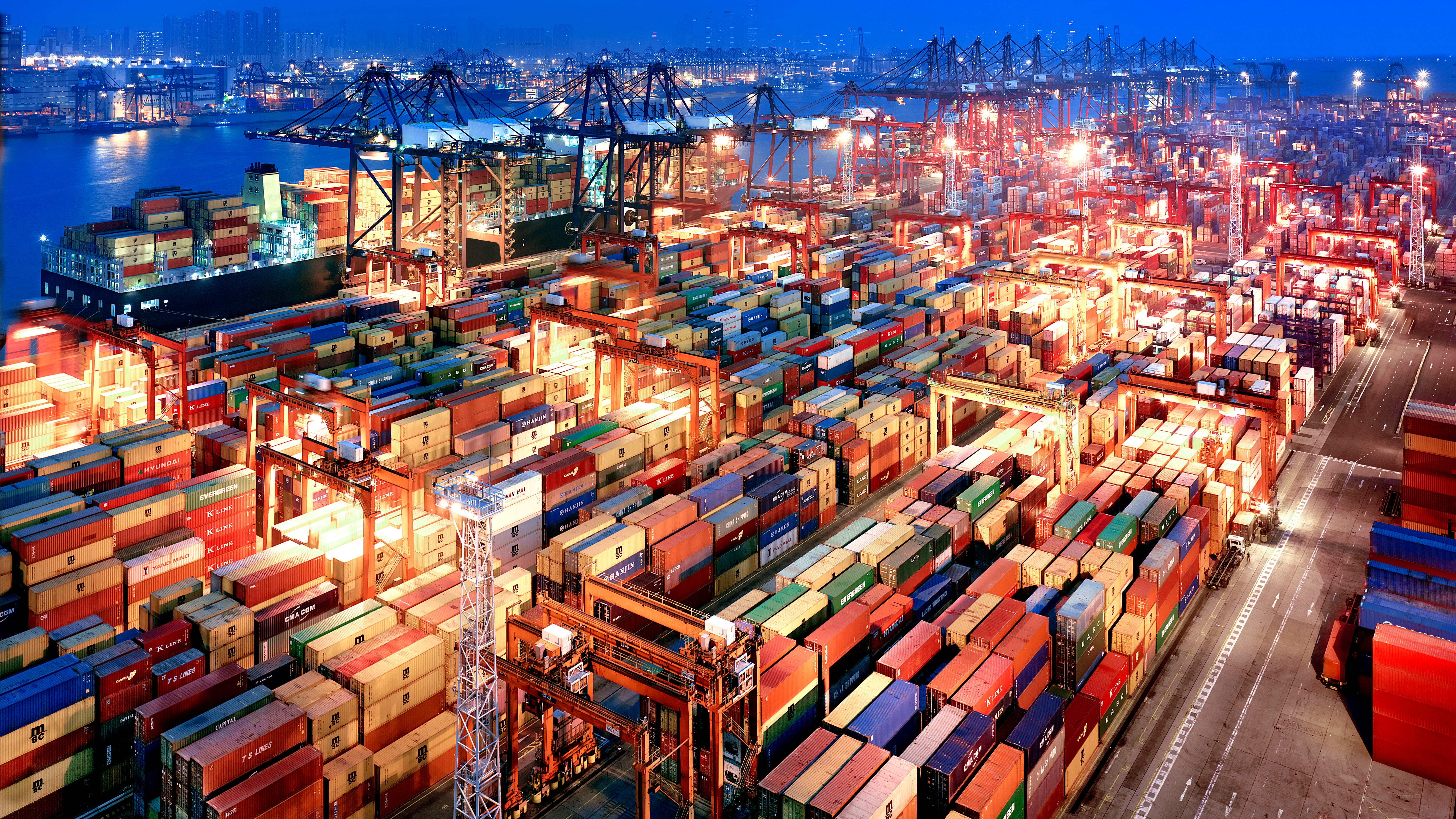
The Hong Kong Container Terminal /Getty
The Hong Kong Container Terminal /Getty
Editor's note: Wang Jianhui is the deputy general manager of the research and development department at Capital Securities. The article reflects the author's opinions and not necessarily the views of CGTN.
During its annual meeting, the International Monetary Fund (IMF) released the October issues of the "World Economic Outlook" and "Global Financial Stability Report." The two reports show a cautious stance compared with the April issues by revising downward the global growth projection due to resurgence of the pandemic and tightened policies by major emerging economies. Seeking straightforward advice for decision makers from the authoritative analysis is tough this time, even harder than in the unprecedented crisis starting last year, when proactive monetary and fiscal policies could be simple answers.
Whether or not and when to normalize the policy, what to do with the debts at almost historical highs and so forth, still remain huge challenges, but no single "silver bullet" is available for every country. The reports basically suggest, besides giving general advice, that future moves should be "tailored to country characteristics and needs." They still, along with the research works of other top multilaterals, such as the World Bank, shed some light on several viable options for most countries, ranging from structural changes toward digitalization for the industries to concentrating support on small and medium-sized companies; the most effective one among the "low-hanging fruit" may be promoting global trade as we did a decade ago.
While the related policies are not dependent on major moves such as raising or lowering interest rates, foreign trade is in everyone's interest and crucial to expedite a more balanced global recovery in a relatively short term. With global trade shifting onto the fast track, decision makers would have more resources and tools to deal with bigger challenges. Since 2000, the world's total exports in goods and services have increased by an accumulated 190 percent to $18.8 trillion in 2019, accounting for one-fifth of the total GDP. Assuming a 5 percent profit margin, exports contribute about a quarter of annual economic value added. Therefore, the economy tends to grow faster while the trade is booming. Between 2000 and 2010, the exports of advanced and emerging economies grew by 96 percent and 262 percent, respectively, while the GDP of both sides increased by 63 percent and 238 percent, accordingly. Between 2010 and 2019, however, the export growth slowed down to 19 percent and 23 percent; unsurprisingly, the scale of both economies only expanded accumulatively by 21 percent and 52 percent, respectively.

There are some concerns about divergent recovery and possible uneven development in the post-pandemic era. As history proves, global trade, a main creator of national wealth, plays an important role in narrowing the gap between developed and developing nations in terms of structure and scale. Twenty years ago, total foreign trade accounted for 49.6 percent of emerging economies' GDP, while the number for advanced economies was 36.8 percent. The export volume of emerging economies was only 25 percent of the advanced ones. At the end of 2019, the ratios converged to 42.6 and 42.9 percent, respectively, and the exports of emerging nations were equivalent to 68 percent of their rich peers. Promoting global trade at this critical moment is not only effective to fix supply chain problems bothering many economies and relieve the pressure of inflation, but also necessary to maintain the positive trend of economic convergence in the long run.
Compared with other areas, trade is more sensitive to policy changes. Under a favorable environment, global trade witnessed an amazing pace of 16 percent average growth between 2003 and 2008, but restricted policies stemming from trade disputes made growth drop to -2.6 percent in 2019. After the initial wave of lockdowns, the Chinese government introduced and implemented a series of preferential measures to help foreign trade companies – the majority of them small and medium-sized firms – recover, so the export and import growth returned to positive figures in last June and September, about eight to nine months earlier than most developed countries. Last November, China's total trade volume year-to-date, $4.17 trillion, had already exceeded the level in 2019, thus helping the overall economy to outperform.
For all other nations, especially the developing partners, this is a good way to go. According to the World Bank "Global Economic Prospect" (2021 June issue), the bulk of the cost of foreign trade is not tariffs (accounting only one-fourteenth of the total cost), but shipping and logistics, handling procedures and processes at and behind the borders. Simplifying and streamlining the procedures and processes could lower the cost and increase competitiveness quickly, thus releasing the potential in this field. The current issue of "World Economic Outlook" projected optimistically that the trade growth this year and next year could reach 9.7 and 6.7 percent, respectively, 1.3 and 0.2 percentage point higher than those in the April issue, and significantly higher than the median growth of 1.5 percent during past 10 years.
(If you want to contribute and have specific expertise, please contact us at opinions@cgtn.com.)

